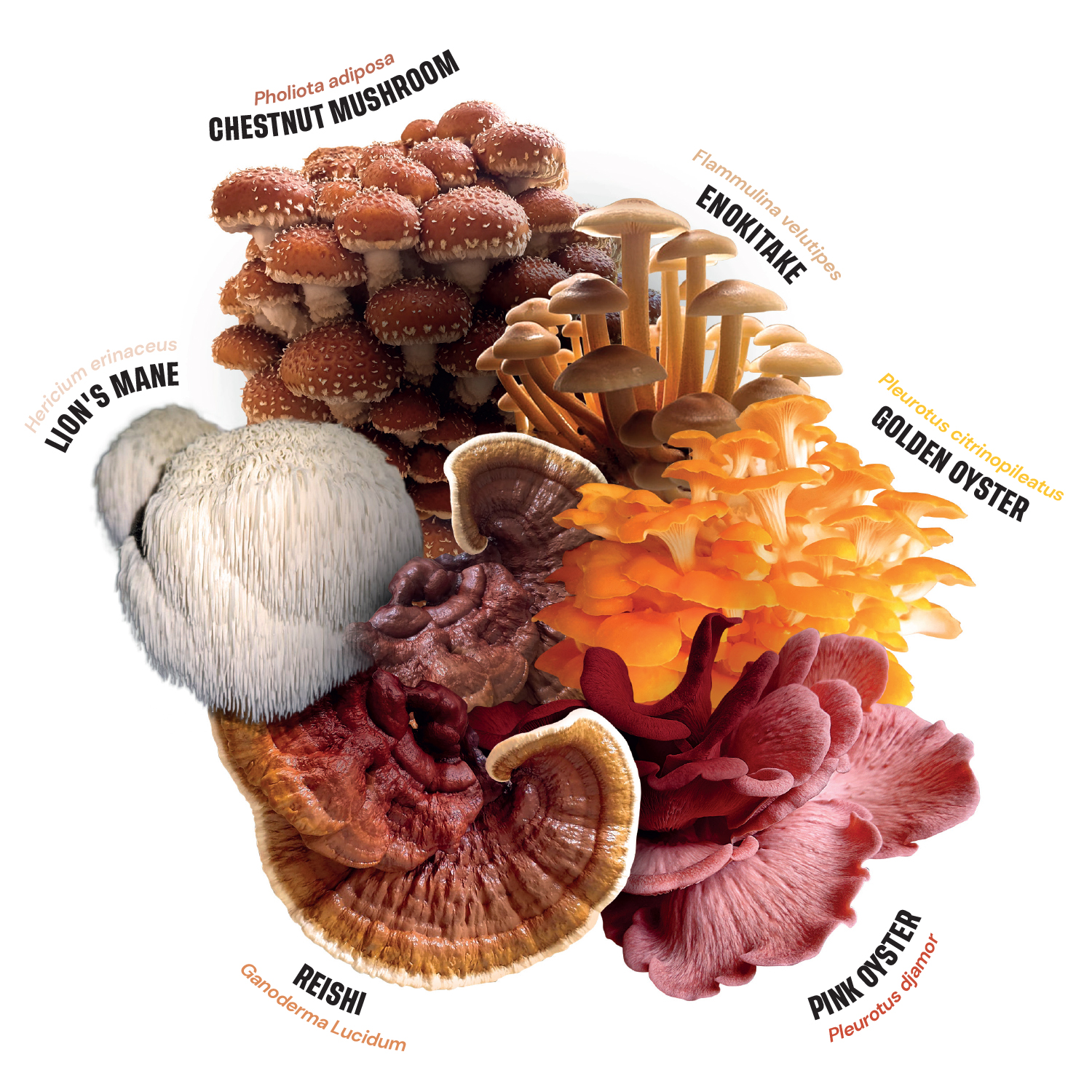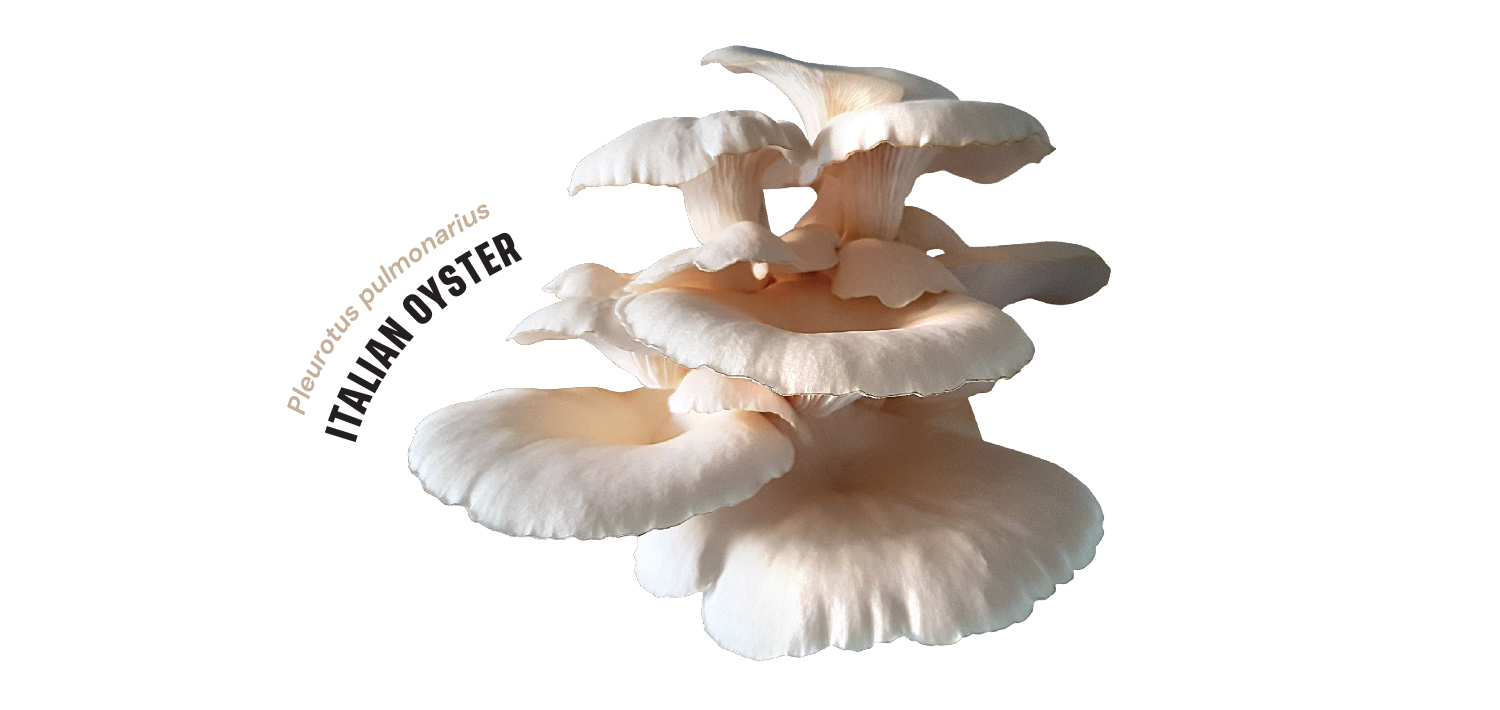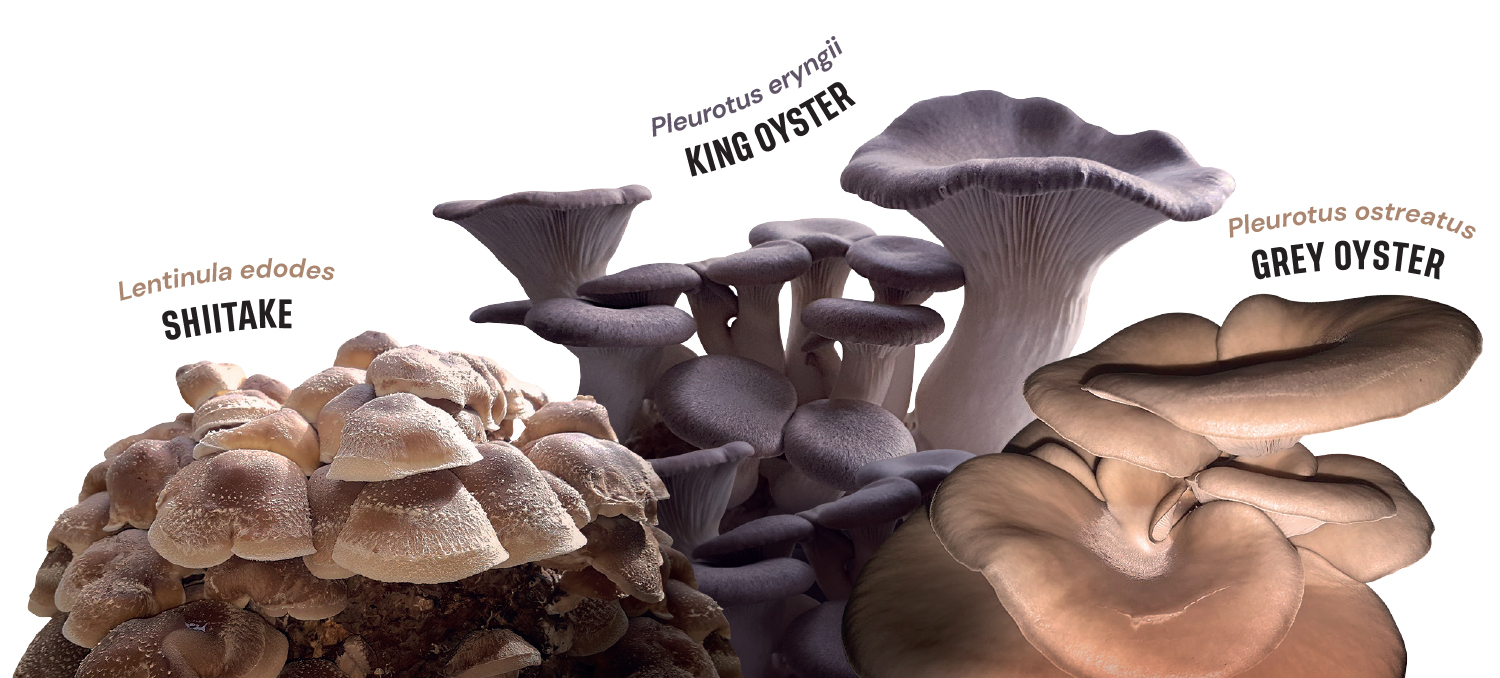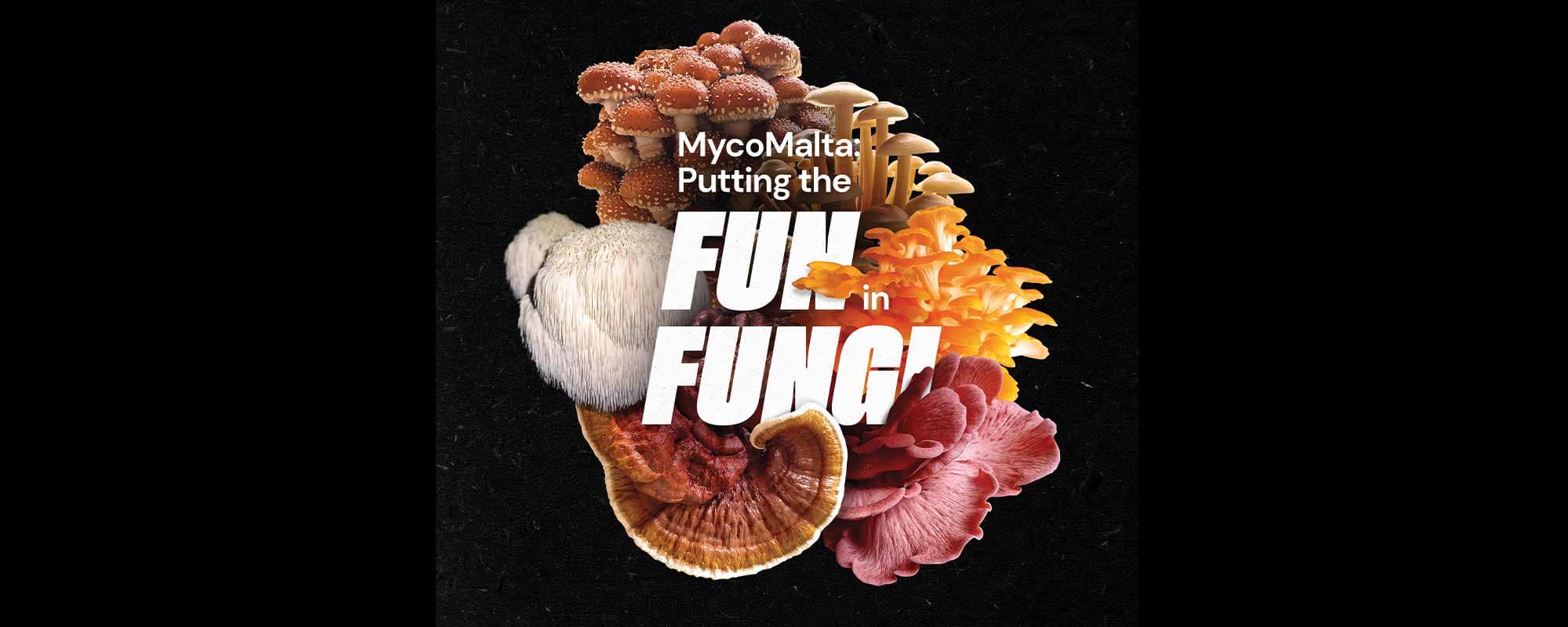Have you ever wondered how mushrooms grow? A Maltese company, sharing its founder’s love for fungi, is delighting kids and grown-ups with the experience of growing their own mushrooms in the comfort of their home.
‘Throw your food out if it is mouldy.’ If this sentence sounds familiar, you’ve already seen fungi. Visible mold is one of the reproductive structures that certain fungi form. Curiously, mushrooms are another. In fact, the Fungi kingdom is incredibly diverse. Beyond the popular images of gilled mushrooms, there are also club, coral, shell, and ball mushrooms, to name just a few.
Being sessile (organisms that live anchored to a substrate and cannot move about freely), fungi have developed several chemical survival strategies over millions of years. Fortunately for us, many of these can be helpful in our fight for health. Compounds to lower cholesterol and fight multiple sclerosis, as well as the world’s first antibiotic (penicillin) are just a few examples of how some fungi have helped humanity. Others are incredibly aggressive and can colonise and protect our foods from other contaminants, as in cheeses and cured meats, or they can simply make our food better, like in bread, wine, and beer. Cheers!
But, if not all fungi are mushrooms, what are they? Commonly defined as a plant-like organism that doesn’t have chlorophyll (green pigment that plants use to produce food in a process called photosynthesis), they are neither plants nor animals. If you’ve ever turned over a pile of leaves on a forest floor, you’ve almost certainly seen white, furry patches hitched to the undersides of the fallen foliage. These white, cottony masses are known as mycelia, the growing and feeding part of a fungus. Some fungi become more visible when, in the right conditions, mycelia multiply and fuse to form mushrooms the sexual reproductive organ of the fungus.
There’s a lot more to fungi than we think. Fungi are medicine, a pesticide or herbicide replacement, a binder used in construction, an alternative to leather and meat. Mushrooms are so much more than food.
Mushrooms can be mycorrhizal fungi, which form a symbiotic relationship by connecting to the roots of living forest trees. They take nutrients from the tree, and in return, they drastically extend the reach and granularity of its root system. Some researchers also believe that the underground fungal network even allows trees to communicate with one another! However, fungi can also be parasitic, extracting nutrients from trees until the tree eventually dies. There are also saprophytic mushrooms, which live on organic matter such as dead trees, plant roots, and fallen leaves.
M&M: Maltese Mushrooms
‘There’s a distinction between fungi and mushrooms,’ explains Godwin Borg (founder of MycoMalta) with contagious enthusiasm. ‘Mushrooms serve one biological function – reproduction. Comparing a fungus to a tree, mushrooms are its flowers. Everything else (the branches, trunk, leaves, roots etc), is the fungus itself, made of fine hairs called hypha’.
We currently know of 15,000 varieties of mushrooms and an estimated 1.5 million varieties of fungi, but there are surely more waiting to be discovered! New mushroom varieties are discovered year after year. ‘But do you know why mushrooms are something to be excited about?’ asks Godwin. ‘They have a fast life cycle. You can almost see them grow. With a tree, it will take years to see some difference, but with mushrooms, you inoculate it one day, and two weeks later it’s already fruiting.’
Typically, each mushroom has a stem, a cap, and gills under the cap. It produces billions of spores on the gills that, when mature, are released and fill the air around us. Being tiny, typically less than a hundredth of a millimetre long, they are easily dispersed by the wind. Under favourable conditions, spores will settle on a preferred substrate and begin to grow, eventually forming a new fungal organism away from the parent.

The Challenges of Growing Local Mushrooms
Fungi won’t grow or produce mushrooms unless environmental conditions are exactly right, and they can remain dormant for many years waiting for suitable fruiting conditions. Climate, humidity, and a weak agricultural sector are the major factors that impact their growth. ‘In Malta, there are years that are too dry for mushrooms to grow, where the soil remains dry even in winter. This almost never happened when I was a kid,’ reflects Godwin. ‘And, it’s getting worse due to climate change. Malta is also very dusty and the air is quite polluted’, which is a problem because every microscopic airborne particle can be harbouring bacteria or fungi which will go on to compete with the cultivated fungus.
‘Funnily enough, I had that exact problem in my first cultivation attempt,’ laughs Godwin. ‘Mushrooms eventually grew but not the mushrooms that I intended at all. It was like seeding potatoes and harvesting onions.’ Creating the ideal environment for the wrong mushroom was still a partial success. ‘I just needed to do a lot more experiments, fail hundreds of times and make a few more messes in the kitchen,’ jokes Godwin. ‘But jokes aside, I learned. And that was the important part’.
MycoMalta: A Shared Love For Mushrooms
With his curiosity and love for fungi, Godwin Borg also wanted to share his experiences and knowledge. ‘There’s a lot more to fungi than we think. Fungi are medicine, a pesticide or herbicide replacement, a binder used in construction, an alternative to leather and meat. Mushrooms are so much more than food,’ adds Godwin. After graduating with a Masters in Knowledge-Based Entrepreneurship at UM in 2021 and being awarded the TAKEOFF Seed Fund Award, Godwin started a company that shares this belief, MycoMalta.

By producing mushroom kits for every home and age, MycoMalta provides a fun and educational experiment for both parents and kids alike. ‘After seven years, we now can produce 10 varieties of kits, and I would say that our clients are at least 95% successful’ states Godwin. ‘We have to remember that these kits need to grow in almost all conditions of almost every house in Malta. This is very difficult to achieve.’ Godwin adapted a strategy different from industrial mushroom farms to respond to this necessity. While the industry conditions the environment to the needs of a specific mushroom species, MycoMalta offers different kits according to the available environment. This means that depending on the season (winter or summer for example) and temperature (a mild or hot summer), you’ll find distinct kits available. Some taste like pork or smell like fresh fish or pears. They are pink, yellow, brown, orange or even fluffy, hairy, and slimy!
But there’s more to each kit than growing a specific mushroom. It has information on each mushroom’s origin, how it’s cooked, recycled, and even its benefits or peculiarities. This educational approach has been largely approved. ‘Our mushroom kits usually fruit in 4-8 days, so people can see results in a short period of time,’ Godwin details, ‘which makes it ideal for kids.’
Currently, the startup produces 10 different mushroom varieties, each in its own season, substrate preference, and timing. Currently testing new types of mushrooms, Godwin strongly believes that his failures were a deep educational opportunity in the sense that, when you understand why you failed, you have an opportunity to try again.
‘I really believe that the love for fungi can be a profitable business that harnesses a new market, creates employment and careers, and educates society in general. Malta has the advantage of being a small island. We have brilliant minds and incredible researchers, and since people are close together, by default it is easier to convey the enthusiasm.’






Comments are closed for this article!